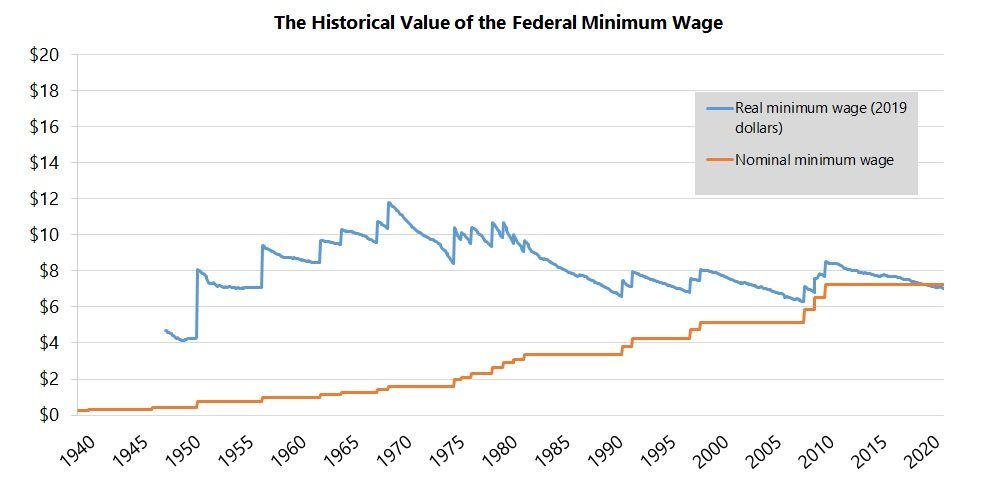Since 2012, the Fight for $15 movement has popularized the concept of the $15 minimum wage. Since then, seven states have passed legislation to phase-in a $15 minimum wage, as well as various cities, including San Francisco, Seattle, New York City, and Washington, D.C. The Raise the Wage Act passed in the House of Representatives in 2019, which included a phased increase to a $15 federal minimum wage and provision to eliminate the tip credit.
The magic number for the right minimum wage continues to rise: the Aurora, CO city council recently voted down a proposal to raise the city’s minimum wage to $20. In Portland, ME, voters are facing an effective $18 minimum wage on their ballots in November, escalated by a provision that requires paying workers time-and-a-half during a declared state of emergency.
But does the $15 (or more) mark for federal minimum wage come from historical precedent? Consider the following chart following the historical value of the federal minimum wage, adjusted for inflation.

Since 1990, when the federal minimum was $3.35, the real value has averaged $7.44. Since its inception in 1938, the inflation-adjusted value of federal minimum wage has averaged $8.14. This number is slightly larger, partially due to a few marginal increases in the nominal minimum wage coupled with significant inflation in the 1960s. By contrast, the Raise the Wage Act would drastically increase the federal minimum wage to unprecedented levels, and would continue unprecedented growth after $15 per hour is implemented.
So where does the $15 minimum wage come from? Certainly not from many economists – a 2015 survey found that 72 percent of participating labor economists oppose a $15 minimum wage. A majority also indicated that a $15 minimum wage would have harmful effects on employment. When discussing how the $15 number was determined, the organizing director of the Fight for $15 joked: “It was a pretty scientific process. $10 was too low, $20 was too high, so we landed at $15.”
Yet, according to the near-century of data on the value of the federal minimum wage, the Fight for $15 movement’s central demand is not based on any historical or economic precedent.
